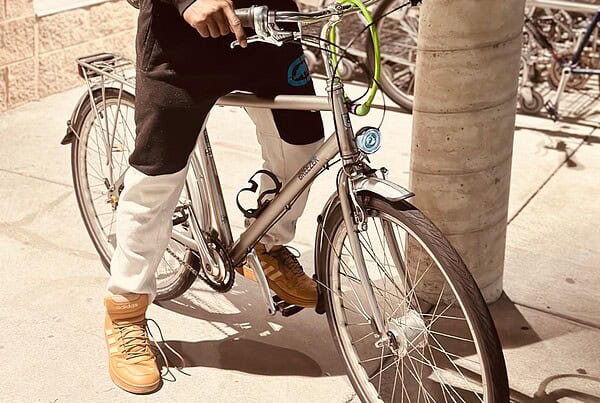Learn more about our local candidates who are running for Harrisonburg City council. You can find out where you vote on the Harrisonburg Voter Registrar Office website and Google provides an easy to use map to help you find your polling place.![]()
![]() Shenandoah Valley Bicycle Coalition is a 501(c)3 nonprofit organization and does not support or oppose candidates or political parties.
Shenandoah Valley Bicycle Coalition is a 501(c)3 nonprofit organization and does not support or oppose candidates or political parties.
We asked the 4 candidates who will be on the ballot and running for Harrisonburg City Council to answer four questions. You can hear from the write-in candidates on a recorded forum that aired on 11/4/2016 via the paid program “Breaking Through” We received responses from 2 of the 4 ballot candidates but all four did attend our October 18 City Council Candidate Forum and answered similar questions. You can watch a recording of that forum. Please see Questions and their responses below:
Questions for City Council Candidates:
1. The trend in vibrant, growing cities is to expand biking and walking infrastructure. Cities always look for and borrow ideas from other cities. What types of bicycle and pedestrian projects are being done in other places that you would like to see in Harrisonburg include and how will you help prioritize those.
2. What is one unpopular decision that you think needs to be made to shape Harrisonburg? How would you work to convince people that this decision will have positive benefits?
3. Please explain your transportation priorities and how they should compete with other local funding needs.
4. What sort of goals should the city set in regards to biking and walking? Percent of trips by foot or bike? More bike parking downtown? More students walking and biking to school rather than in cars and buses? Other ideas?
Answers to Question #1: The trend in vibrant, growing cities is to expand biking and walking infrastructure. Cities always look for and borrow ideas from other cities. What other things that are being done in other places would you like to see Harrisonburg include and how will you help prioritize those.
Richard Baugh’s Response: I know most of the people engaged with these issues already know this, but it’s still worth saying. Harrisonburg HAS a Bike and Pedestrian Plan. It’s been through a number of iterations, and we’re in fact working on an update right now. That affects how we approach things. We always want to be open to good ideas, and it’s not like I or anyone else has thought of everything. But there’s a structure already in place that lists projects and priorities. And it reflects stakeholder input. So, for anyone with a great idea, the good news is that you’re not starting from square one. It also means that a great place to start is to look at our existing plan and see how it might fit in there.
More good news is that we seem to be entering a period where there are more grant funds out there, or where these types of projects are viewed more favorably than in the past. One thing we know is that in the grant world it’s better to have a plan in place than simply to have a promising idea. We’ve also recognized that in order to step up our game with the grant process, even better if we can provide data. What’s our ridership? How is a particular project expected to enhance that? What are some other benefits to the community? All of these are areas where we are already working and improving. As far as innovations that aren’t a point of focus in our current planning, I confess I’ve always been intrigued by the idea of a bike-sharing program. I don’t necessarily know how or when we can pull it off, but I think it would be cool.
George Hirschmann’s Response: I have been through Europe and bicycles are prevalent. Easier to get around, healthier, environment-friendly, and lessens the load on road ways. They seem to have more available bike parking, and car drivers are certainly more bike aware. Cyclist seem to obey right of ways, not darting through and intersection against the light, etc. Bike education needs a bump here to make everyone more bicycle conscious.
2. What is one unpopular decision that you think needs to be made to shape Harrisonburg? How would you work to convince people that this decision will have positive benefits?





